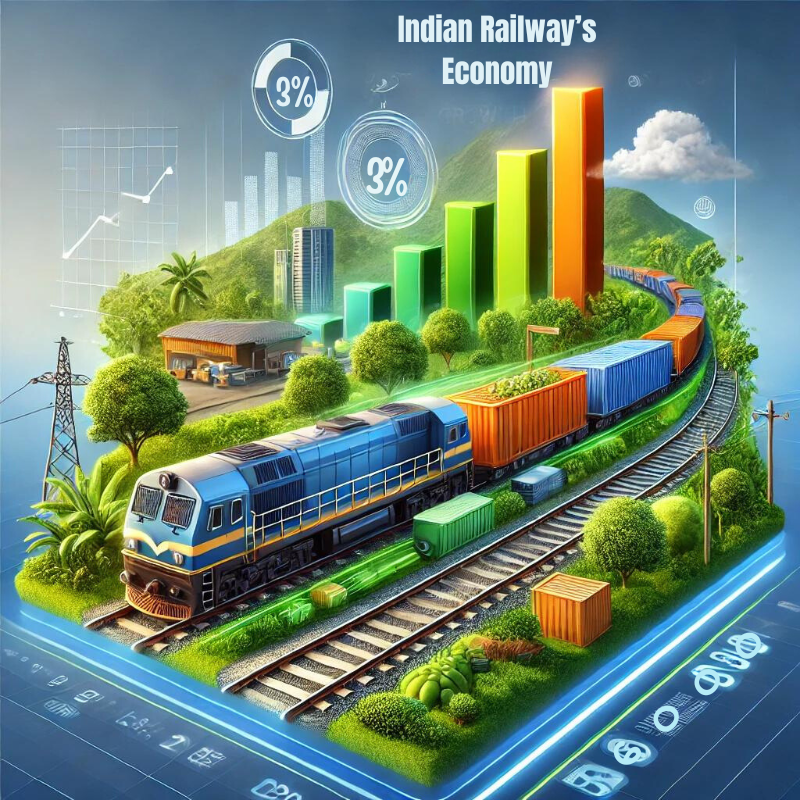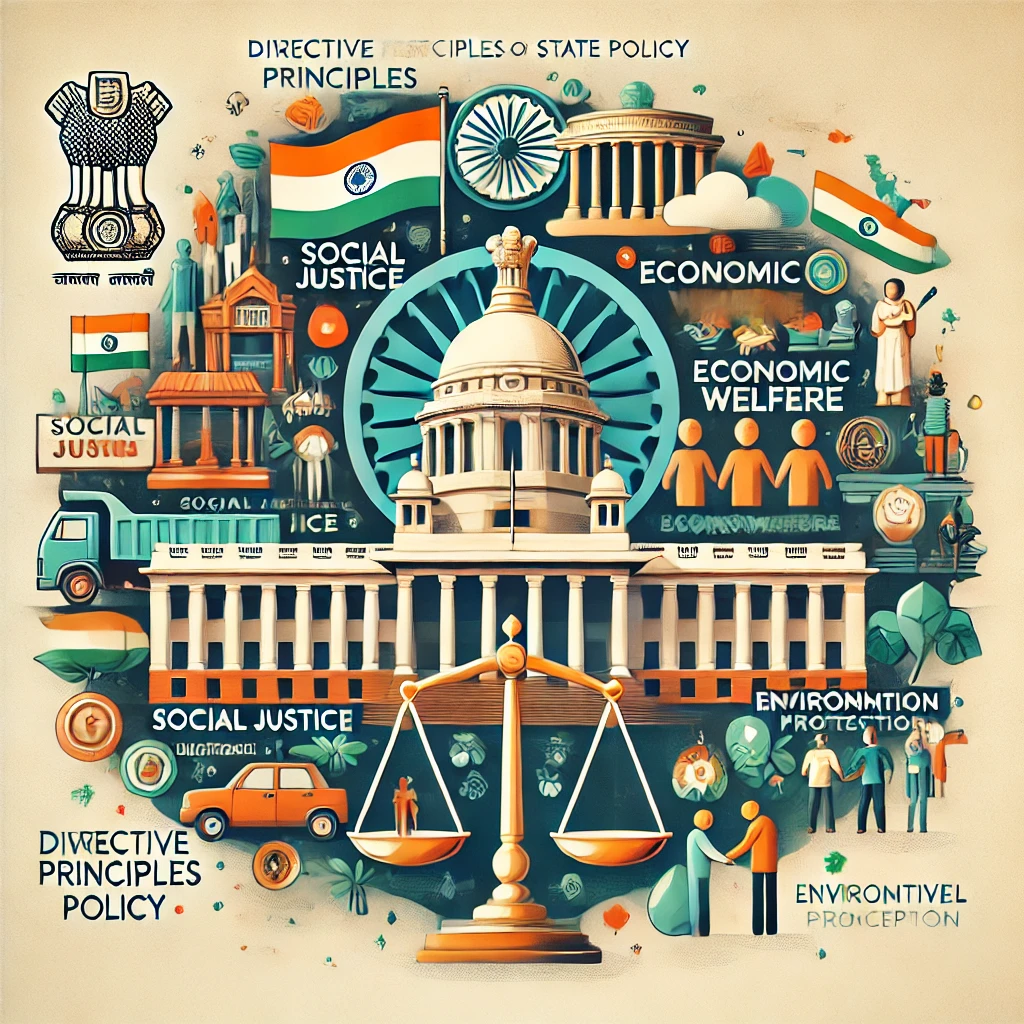Indian Railways is the owner of the world’s fourth-largest rail network; since 1951, it has been fighting for its position in India’s transport sector. Over the years, its share of freight transport fell from 85% in 1951 to less than 30% in 2022, even though the route and track length improved since 1950. Therefore, the passing of this message will influence India’s net-zero ambitions and efforts put into the decarbonization of the transport sector. This also aims to reverse this trend by targeting a 45 percent rail share in freight transport by 2030-31, with an aim of 3,600 million metric tons of freight loading.
| GS Paper | General Studies III |
| Topics for UPSC Prelims | Indian Railways, National Rail Plan, Dedicated Freight Corridors, Nationally Determined Contribution, Bharat Gaurav trains, Comptroller and Auditor General of India, Kavach, Balasore triple train crash |
| Topics for UPSC Mains | Significance of Railways for India, Major Issues Related to Indian Railways. |
Origin of the Article
This editorial is based on “Roadblocks to Indian Railways’ ‘Mission 3,000 MT” which was published in Economics and Political Weekly on 14/09/2024. The article discusses the decline in Indian Railways’ freight transport share and its impact on India’s net-zero ambitions.
Relevance for UPSC Students
For UPSC students, understanding the challenges and reforms needed for Indian Railways is crucial. It relates to the UPSC syllabus under GS Paper 3, covering topics such as economic development, government policies, and sustainable development. This topic helps students grasp the significance of railways in India’s economy and the strategic reforms required to enhance its efficiency.
Why in News
The topic of Indian Railways’ declining freight transport share is crucial for UPSC aspirants as it links to key themes in GS Paper 3, such as infrastructure development, economic growth, and sustainable development. Understanding these issues is essential for answering questions on government policies, fiscal interventions, and India’s climate goals, reflecting the interconnected nature of these subjects in the UPSC syllabus.
Significance of Railways for India
Indian Railways is a cornerstone of India’s economic, social, and environmental landscape. It not only supports the nation’s industrial and agricultural sectors by transporting goods but also contributes to sustainable development by offering an eco-friendly mode of transport. Additionally, it provides affordable mobility for millions, bolsters national security, and fosters urban and rural connectivity.
Economic Backbone
Indian Railways is pivotal to India’s economic growth, transporting 1,512 million tonnes of freight in 2022-23. Dedicated Freight Corridors (DFCs) have been established to reduce logistics costs and enhance transportation efficiency. This infrastructure development is critical for the seamless movement of industrial and agricultural goods, thus facilitating economic prosperity.
Driver in Achieving India’s Climate Goals
Railways are significantly more energy-efficient than road transport, producing less than one-fifth of greenhouse gas emissions per ton-kilometer. As India aims to reduce its emission intensity of GDP by 45% from 2005 levels by 2030, railways play a crucial role. The shift from road to rail for freight can substantially aid in meeting these climate targets.
Affordable Mobility
Railways serve as a great social equalizer by providing affordable transport options. In the period from April to January 2023, passenger revenue earnings increased by 73%. The tiered pricing system ensures that transportation remains accessible to people from all economic backgrounds, making it a lifeline for millions of Indians.
Bolstering National Security and Integration
Railways are vital for the rapid mobilization of troops and equipment to border areas, enhancing national security. Strategic projects like the Bilaspur-Manali-Leh rail line provide all-weather connectivity to critical regions. Additionally, initiatives like Bharat Gaurav trains promote cultural exchange and tourism, fostering national integration.
Urban Lifeline
Urban railway systems, including metro lines, have been transformative for Indian cities. Over 700 km of new metro lines have been made operational in the last decade, reducing traffic congestion and air pollution. For example, the Delhi Metro, which carries about 6.5 million passengers daily, has significantly contributed to CO2 emission reduction.
Bridging the Urban-Rural Divide
Railways play a crucial role in regional development, opening up remote areas for economic activities. Projects like the Northeast Frontier Railway expansion and the Jiribam-Imphal railway line are game-changers for connectivity and local economies. These initiatives help bridge the urban-rural divide by fostering development in underdeveloped regions.
Major Issues Related to Indian Railways
Indian Railways faces critical challenges that impact its efficiency and competitiveness. These include a declining modal share in freight transport, financial strain, over-reliance on coal revenue, capacity constraints, slow technological adaptation, safety concerns, delays in high-speed rail projects, and human resource management issues.
Declining Modal Share in Freight Transport
The share of railways in freight transport has dropped from 85% in 1951 to less than 30% in 2022. The National Rail Plan aims to increase this share to 45% by 2030-31, but current projections are not promising. This decline poses challenges to India’s environmental goals and transport efficiency, requiring strategic interventions.
Financial Performance and Operating Ratio
Indian Railways’ financial health is deteriorating, with its operating ratio breaching 100% in 2021-22. The Comptroller and Auditor General of India has highlighted that the reported figures may not fully reflect the financial strain, especially when actual pension expenditures are considered. This raises concerns about long-term financial sustainability.
Over-reliance on Coal for Revenue
With coal contributing 47% of freight earnings in 2021-22, Indian Railways is heavily dependent on this single commodity. As India transitions to renewable energy sources, this over-reliance poses significant risks. The Ministry of Power’s directive to use “Rail-Ship-Rail” mode for coal transport could further impact revenue, necessitating diversification.
Capacity Constraints and Infrastructure Limitations
Despite increasing its track length, Indian Railways faces severe capacity constraints. The pace of network expansion has not kept up with demand, limiting the railway’s ability to compete with other modes of transport. This has led to a decline in the share of railways in the transport of bulk commodities like cement.
Technological Adaptation Lag
Indian Railways has been slow in adopting new technologies. The container service remains stagnant, contributing only 12% to freight loading. The limited implementation of Kavach, an automated train protection system, highlights the lag in modernizing operations. These issues hinder the railway’s ability to meet evolving market demands.
Safety Concerns and Derailments
Safety remains a critical concern, with an average of 44 consequential train accidents annually. Recent incidents like the Balasore triple train crash in June 2023 and the Sabarmati Express derailment in August 2024 underscore persistent vulnerabilities. Addressing outdated infrastructure and human error is essential to achieving the target of “zero accidents.”
Slow Progress in High-Speed Rail Projects
High-speed rail projects like the Mumbai-Ahmedabad bullet train have faced significant delays and cost escalations. Originally planned for 2023, the project’s completion has been pushed to 2028 due to land acquisition issues. These delays affect India’s long-term competitiveness and economic growth.
Human Resource Management and Skill Gaps
Indian Railways faces challenges in human resource management and skill development. The introduction of semi-high-speed trains requires specialized skills, yet more than 2.50 lakh posts remain vacant. Addressing these vacancies and equipping the workforce with relevant skills is crucial for modern railway operations.
Key Committees Related to Reforms in Indian Railways
Several key committees have made recommendations aimed at reforming Indian Railways. Their proposals focus on safety, financial management, and operational efficiency to enhance the railway’s performance and sustainability.
Vinod Rai Committee (2015)
The Vinod Rai Committee recommended establishing an independent Railway Safety Authority with statutory powers, creating a Railway Accident Investigation Board for impartial inquiries, forming a separate Railway Infrastructure Company, and introducing performance-linked incentives for employees. These measures aim to improve safety and operational efficiency.
Rakesh Mohan Committee (2010)
The Rakesh Mohan Committee suggested revamping the accounting system to follow Indian GAAP, expanding into new sectors like FMCG and IT, prioritizing speed upgrades, and developing logistics parks. These recommendations focus on diversifying revenue streams and enhancing connectivity to industry clusters.

Measures to Revitalize Indian Railways
Strategic measures are essential to enhance the efficiency and sustainability of Indian Railways. These include advanced traffic management, diversifying freight services, accelerating high-speed rail projects, promoting sustainable operations, modernizing freight terminals, and redeveloping stations.
- Implement Advanced Traffic Management Systems
Accelerating the deployment of advanced traffic management systems like Kavach can significantly improve safety and efficiency. Integrating these systems with AI-powered maintenance tools will help identify potential failures proactively, reducing downtime and enhancing operational reliability.
- Diversify Freight Portfolio and Enhance Logistics Services
Indian Railways should develop services for high-value goods and partner with e-commerce companies for specialized logistics solutions. Creating temperature-controlled containers and dedicated express freight corridors can attract new customers from sectors like pharmaceuticals and electronics.
- Accelerate High-Speed Rail and Semi-High-Speed Projects
Focusing on expanding the network of semi-high-speed trains like Vande Bharat and upgrading tracks for higher speeds can make rail travel more competitive with air travel. Modernizing the Golden Quadrilateral network to support speeds of 160-200 km/h is a crucial step.
- Develop Sustainable and Energy-Efficient Operations
Increasing track electrification and expanding solar and wind power generation can make railway operations more sustainable. Installing solar panels on station rooftops and unused railway land can significantly contribute to meeting the railways’ energy needs.
- Modernize Freight Terminals and Develop Multimodal Logistics Parks
Modernizing freight terminals with advanced technology and creating intermodal connections can improve efficiency. Developing logistics parks equipped with container handling equipment and integrated customs clearance facilities will offer end-to-end logistics solutions.
- Enhance Station Redevelopment and Commercial Utilization
Transforming major railway stations into world-class transit hubs with smart city features and commercial developments can enhance passenger experience and generate additional revenue. The redevelopment of Rani Kamlapati Railway Station in Bhopal serves as a model for such initiatives.
Conclusion
Revitalizing Indian Railways is crucial for its role in India’s economy and sustainability. By tackling challenges like declining freight share and financial sustainability through modernization and innovative strategies, the railways can enhance efficiency and competitiveness. Initiatives such as diversifying services and redeveloping stations will significantly contribute to national integration and sustainable development, positioning Indian Railways as a key driver of India’s future growth.

